The Big 10
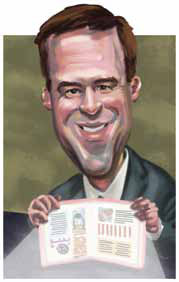
The Most Influential People in EdTech for 2011
By Sascha Zuger
Tech & Learning presents a year-long program with three special sections, each showcasing the power of technology to transform learning. This month, meet the 10 Most Influential People in Ed Tech for 2011 as selected by our readers and advisors.
Illustrations by Jay Bevenour
Doug Levin
As the executive director of the State Educational Technology Directors Association (SETDA), Levin works with policy makers on Capitol Hill and the U.S. Department of Education. In developing the nation’s first three educationtechnology plans and evaluating major programs and initiatives in the field—researching such varied subjects as teacher quality, services for students with disabilities, and student assessment—he called on his experience as deputy executive director of the National Association of State Boards of Education (NASBE) and senior director of education policy at the cable industry’s national education foundation, Cable in the Classroom. His Pew Internet study “The Digital Disconnect” opened important dialogues about closing the gap between Internet-savvy students and their schools.
Karen Cator
Tools and ideas to transform education. Sign up below.

Cator, who directs the Office of Educational Technology at the U.S. Department of Education, is determined to create the best possible learning environments for today’s students. She uses her broad background in the public-education sector—as chair of the Partnership for 21st-Century Skills, as a member of the board of the Software and Information Industry Association’s education division, and as director of Apple’s leadership and advocacy efforts in education— to facilitate the integration of emerging technologies in a way that makes sense for educators and administrators. This includes offering a digital learning environment filled with every technology and tool that teachers need to plan instruction, differentiate learning within the classroom, and guide their students to success.
Gregg Festa
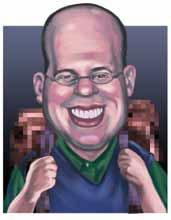
A former K–12 educator, school tech coordinator, and instructional-media designer, Festa brought the ADP Center for Teacher Preparation and Learning Technologies, the program he founded and directs at Montclair (New Jersey) State University, top honors for renewing educators and student teachers through the innovative use of tech. His work in designing “classrooms for the future” that are adaptable enough to accommodate new and evolving pedagogies, in coordinating the Verizon-funded Digital Backpacks program for K–12 educators, and in founding the Silk City Media Workshop, an inner-city afterschool program built on digital media, earned him the title “2007 Technologist of the Year” from the New Jersey Association for Educational Technology.
Ann Thompson
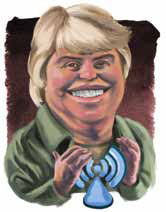
Dr. Thompson, an editor of the Journal of Digital Learning in Teacher Education, is a spokesperson and motivator who prepares teachers to create active problem-solving environments via tech. Her research is backed by the National Science Foundation, the U.S. Department of Energy, the Exxon Corporation, and the U.S. Department of Education. Drawing on her experience as founding director of the Center for Technology in Learning and Teaching at Iowa State University in Ames, she developed the ISU College of Human Sciences’ technology mentoring program, which now serves as a national model. Dr. Thompson not only inspires practicing teachers through forums for sharing research and development but also promotes a new generation of educators who are comfortable with tech and confident in its role in the classroom.
John Kao
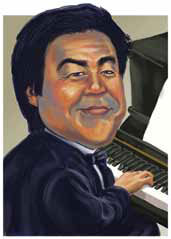
“Mr. Creativity,” a one-time apprentice to Frank Zappa and self-described innovation activist, sports many titles: chairman of the Institute for Large Scale Innovation, founding member of Cisco System’s Innovation Commission, chairman of the Global Advisory Council on Innovation of the World Economic Forum. How does he affect education? His message: He councils government worldwide on how to leverage scientific talent for growth. His warnings about America’s future should be well heeded.
David Warlick
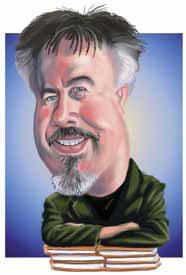
After working for 35 years as a classroom teacher, a district administrator, and a staff consultant with the North Carolina State Department of Public Instruction, Warlick launched the Landmark Project, a consulting, writing, programming, and publicspeaking operation. The venture includes the Education Podcast Network; Class Blogmeister, a classroom-specific blog; and the Citation Machine, which offers simplified AP and MLA resource citations for students and professional researchers. Warlick has written four books on instructional technology and 21st-century literacy, and he conducts presentations and workshops throughout the world. His weekly “Connect Learning” interviews with speakers and attendees at American and international educationaltechnology conferences are available as free podcast episodes on iTunes.
Salman Khan
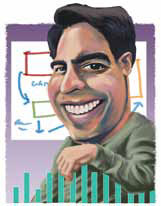
The Khan Academy developed a method of learning by offering free at-home access to more than 2,200 ten-minute academic videos. Students watch these videos at home, and then arrive in their classrooms prepared for in-school “homework” from their assigned videos. Classroom teachers guide these assignments through one-on-one instruction and tutorials. Khan’s bid to “humanize the classroom” has earned not only respect but $2 million from Google’s Project 10100 and another $1.5 million from Bill Gates. Teachers at two Los Altos, California, schools that use the program give it an A, and 12 million others in more than 225 countries are reported to access the free multilingual downloads 100,000 times a day.
Jonathan Ive and the Apple Design Team

Because Oklahoma State University found that its fall 2010 semester iPad pilot program not only enhanced students’ academic experience but also lowered administrative expenses, Apple’s Jonathan Ive and the design team collectively get a Top Ten nod. This engaging tech, paired with Apple’s App Store’s thousands of educational-software offerings, helps students reach course benchmarks faster while lowering network storage requirements (through the use of cloud computing) as well as textbook and printing costs. K–12 schools are jumping on board, using the responsive multi-touch screen; large high-res LED-backlit IPS display; and thin, light design to integrate contemporary and traditional teaching approaches and prepare a new generation of students for success.
the “Google for Educators” Development Team
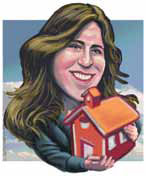
The Education Apps Team at Google has wisely engaged the expertise of educators like Julia Stiglitz (at right) since 2008. Google for Educators has become a central point from which teachers can get access to invaluable classroom resources. These include Google Docs, Google Earth, Picasa, SketchUp, Google Scholar, Book Search, Google Maps, and Google Sky. Whether it’s using Google Maps to stroll the sidewalks of distant cities and creating a personalized museum map for an upcoming field trip or tapping Google SketchUp to create 3D models for the science fair, the Google for Educators team offers a central user-friendly resource for teachers to create an interactive classroom.
Punya Mishra
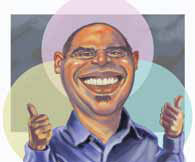
Mishra co-chairs the Society for Information Technology & Teacher Education (SITE) conference and is a professor of educational technology at Michigan State University in East Lansing, where he directs the master of arts in educational technology program. His work in the theoretical, cognitive, and social aspects of the design and use of computer-based learning environments has received national recognition, as has his Technological Pedagogical Content Knowledge (TPACK) framework. A much published public speaker, with 45 articles and book chapters to his credit, he consults with school districts and offers K–12 teachers presentations and workshops that have earned him the Michigan State University College of Education’s Teaching Excellence Award and the AT&T-MSU Instructional Technology Award.
